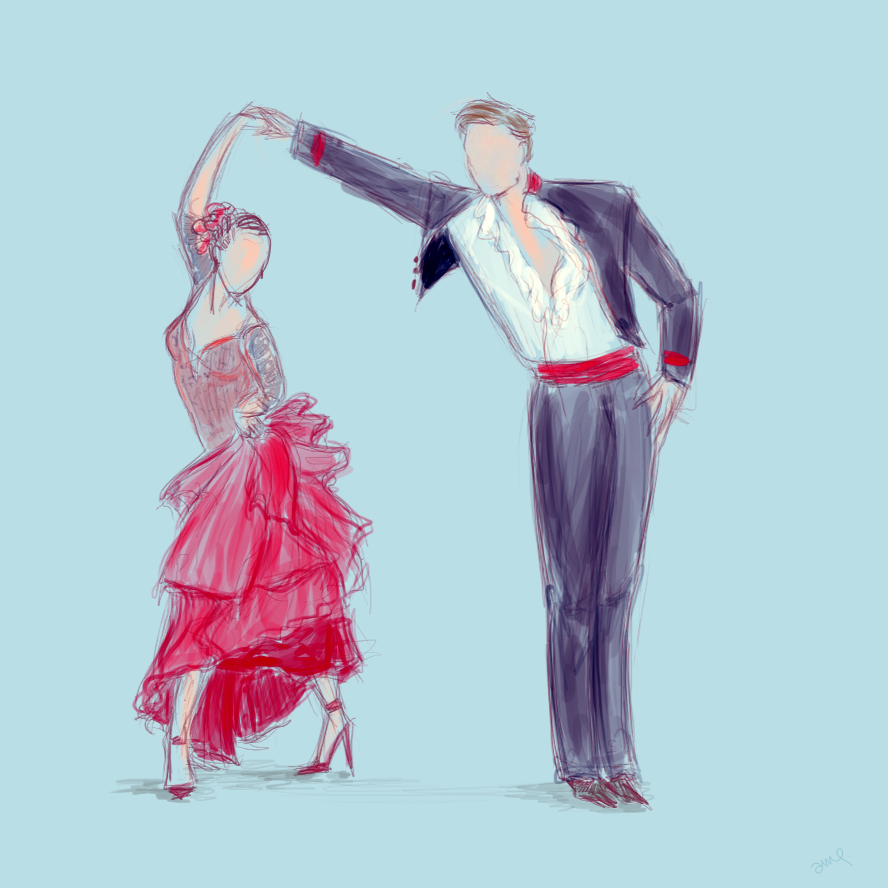Paso Doble, meaning “two
steps”, is the reenactment of bullfights in the form of a dance. The origins
lie in the Torero’s (bullfighter) ritualistic entrance to the ring and his
dramatic performance before the killing. Surprisingly, the dance was invented
in Southern France not in Spain. However, while the names of the steppes are
French; the music, the theme, and dance are highly influenced by the Spanish.
It was in the 1930s’ Paris that Pierre Zurcher-Margolle and Doris Lavelle popularized
Paso Doble among the upper classes (zimbio.com). The dance arrived to the US
and other English speaking countries in the same decade, but did not gain much
success because of its demand for experience.
In
the dance variant of the bullfight, the man personifies the torero, while the
woman may change her roles between the bullfighter’s cape, a flamenco dancer,
and the bull itself. The performers’ posture, movement, and attitude much
resemble that of the Flamenco dancers’. The man acts proud, frightful,
courageous, full of dignity, and undefeatable. On the other hand the woman is flexible,
playful, and provocative; the skirt following her wimpling like a real cape.
The music, the dresses,
the dancer’s way of looking at each other, and their movements all contribute
to the dramatic effect of the performance. The music is the typical music of
bullfights with the lofty and combative effect triggered by the sound of trumpets.
The opponents are looking deep into each other’s eyes with scrutiny like they
were trying to figure out the other’s next step and were preparing for the next
clash. Their movements are very grandiose.
All their muscles are tight throughout the performance not letting one moment
of rest because it could result in losing the battle.
The dresses are traditionally red and black symbolizing
war and blood.
The performers move in
long steps, penetrating every inch of the dance floor. Even the arm movements
are artistic and well-choreographed.
Paso Doble is the
intertwining of a national tradition, theatrical performance, and the art of
dance. Its complexity makes it so brilliant. One can enjoy it on three different
levels. This three equals four for those dancing it.




0 comments:
Post a Comment